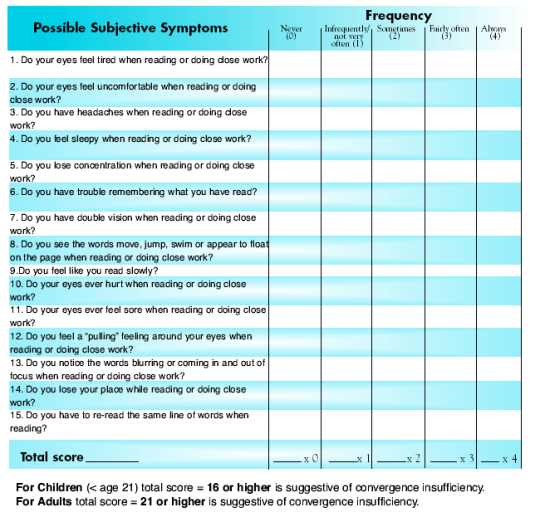 No program that addresses myopia control would be complete without talking about the important concepts of posture and visual hygiene advices.
No program that addresses myopia control would be complete without talking about the important concepts of posture and visual hygiene advices.
There is ample evidence that conditions which lead to muscle tension and place undue stress on the visual system will, over a period of time, lead to eye problems such as myopia, and other disorders such as focusing and binocular coordination problems. Many authorities blame our culture’s emphasis, for both children and adults, upon prolonged near vision tasks (such as reading, writing, drawing, video games, computer work) for an increase in visual problems.
While we cannot eliminate those tasks that need to be done, and may even be pleasurable, they can be carried out in a manner that imposes minimal stress on the visual system.
If followed, these suggestions may result in easier and more productive study and desk work and will have value in preventing or retarding the development of visual problems.
Reading distance
For reading, writing, and other near vision tasks, it is important to read or write at an appropriate distance.
When the working distance is too short, both children and adults, it creates substantial additional effort on the focusing system and alignment of the eyes (convergence) This added stress can lead to eye strain and a which will increase stress symptoms.
The spontaneous distance at which we read is called the reflex reading distance (RRD). This must always be compared to the Harmon distance.
Harmon distance
In the fifties, D.B. Harmon, an educator and a kinesiologist, has shown that the ideal reading distance for each individual was the distance between the center of the middle joint of the elbow to the center measured outside of the arm. Working at the Harmon distance reduces visual stress at close. Harmon believed that environmental factors were related to the development of visual problems and had an excellent understanding of the relationship between movement, posture and vision.

How to measure Harmon distance
Harmon has conducted studies of posture and vision of a phenomenal number of children (over 160,000!) in the forties and fifties. His main findings were:
- In 1958 he showed that 30.2% of schoolchildren tested had postural problems that may be related to vision.
- He had also found an increased prevalence of visual problems with age in children in primary school from 20% at entry to primary school and 80% after five years of school. His investigations in the school environment led him to believe that certain visual problems appeared when subjects were subjected to near vision work in awkward postures in order to maintain an effective visual function. (1958)
- Poor posture not only causes visual problems. A postural imbalance requires a greater expenditure of energy, which reduces the effectiveness of the subject to perform its task. Thus the child will have a smaller amount of energy for school learning. (1951, 1958)
- Harmon also noted that using horizontal surfaces tend to require the student to lean forward and to approach its work plan. It is therefore preferable to use work plans inclined at 10 ° or even better at 20 °.
- Why 20 degrees? Harmon demonstrates that it is the physiological angle that everyone adopts between the horizontal plane passing through the elbows and forearms while reading, in an unconstrained outdoor environment. This position is accompanied by the facial plane parallel to the plane of the forearms.
- When we bend forward to read, this induces cervical stress, makes digestion more difficult and prevents adequate respiration necessary for the proper functioning of metabolism.
When doing his study, Harmon raised the work-surface to a 20 degree angle, bringing the surface more parallel to the face. This significantly reduced the compression of the intervertebral discs. See the following image which shows an ideal working posture with a surface tilted 20 degrees.

Ideal working posture
http://www.visualedgesb.com/
In the fall of 1942, after six months in the remodeled classroom, “only 18.6% of those examined in November showed visual difficulties, as compared with 53.3% tested six months previously.” There was also a significant reduction of posture problems (reduced by 25%) and chronic fatigue (55%).
It is unfortunate that these studies and conclusions have been relegated to oblivion. Many postural problems and vision could be avoided if we applied simple changes in our schools…
References:
Harmon DB. Notes on a Dynamic Theory of Vision, 3rd Revision. Austin TX, Self Published, 1958.
Harmon DB., Some preliminary observations of the developmental problems of 160,000 elementary school children. Med Woman’s J 1942:49:75-
 British scientists launched a major government-commissioned study on Tuesday into the effects of mobile phone usage on the developing brains of children.
British scientists launched a major government-commissioned study on Tuesday into the effects of mobile phone usage on the developing brains of children.







